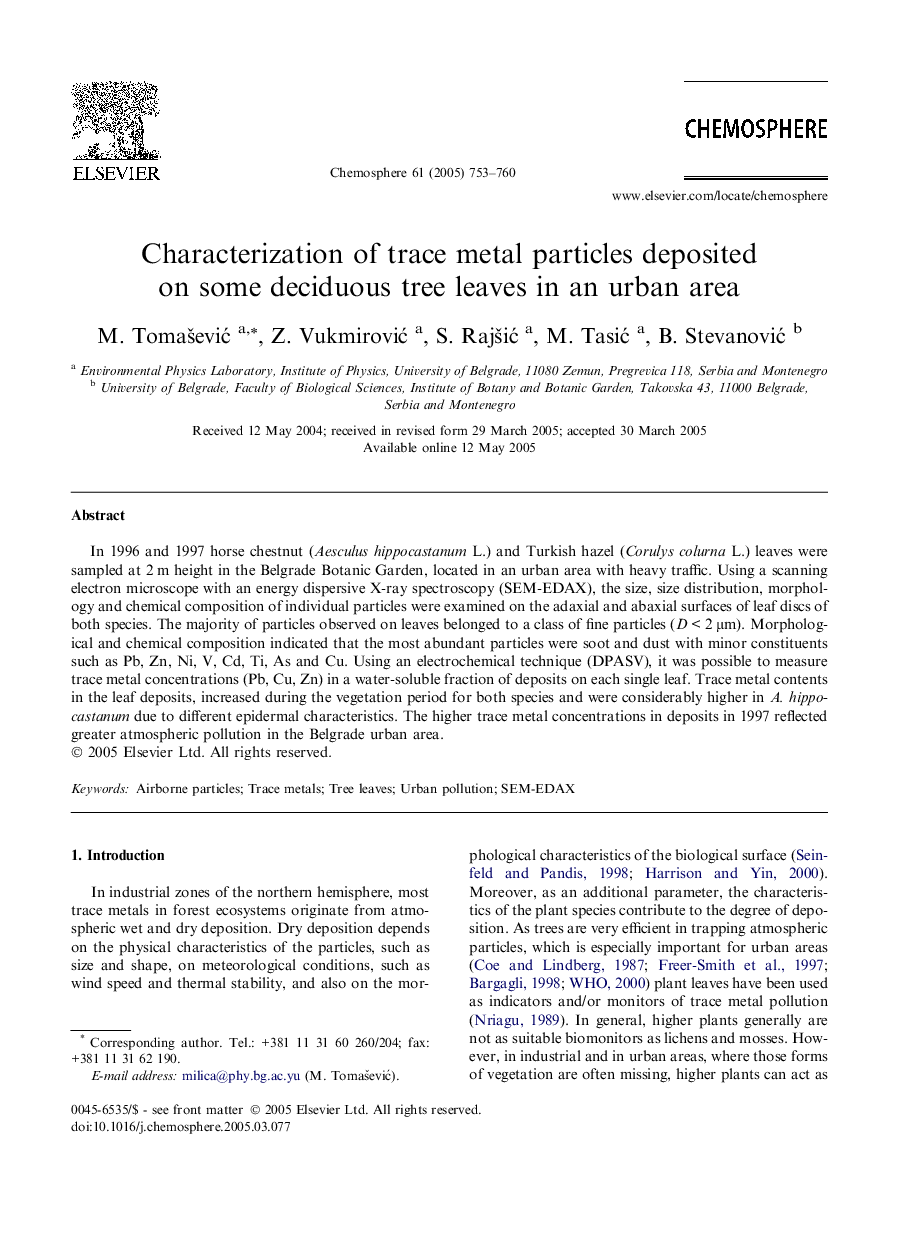| Article ID | Journal | Published Year | Pages | File Type |
|---|---|---|---|---|
| 9451207 | Chemosphere | 2005 | 8 Pages |
Abstract
In 1996 and 1997 horse chestnut (Aesculus hippocastanum L.) and Turkish hazel (Corulys colurna L.) leaves were sampled at 2 m height in the Belgrade Botanic Garden, located in an urban area with heavy traffic. Using a scanning electron microscope with an energy dispersive X-ray spectroscopy (SEM-EDAX), the size, size distribution, morphology and chemical composition of individual particles were examined on the adaxial and abaxial surfaces of leaf discs of both species. The majority of particles observed on leaves belonged to a class of fine particles (D < 2 μm). Morphological and chemical composition indicated that the most abundant particles were soot and dust with minor constituents such as Pb, Zn, Ni, V, Cd, Ti, As and Cu. Using an electrochemical technique (DPASV), it was possible to measure trace metal concentrations (Pb, Cu, Zn) in a water-soluble fraction of deposits on each single leaf. Trace metal contents in the leaf deposits, increased during the vegetation period for both species and were considerably higher in A. hippocastanum due to different epidermal characteristics. The higher trace metal concentrations in deposits in 1997 reflected greater atmospheric pollution in the Belgrade urban area.
Related Topics
Life Sciences
Environmental Science
Environmental Chemistry
Authors
M. TomaÅ¡eviÄ, Z. VukmiroviÄ, S. RajÅ¡iÄ, M. TasiÄ, B. StevanoviÄ,
